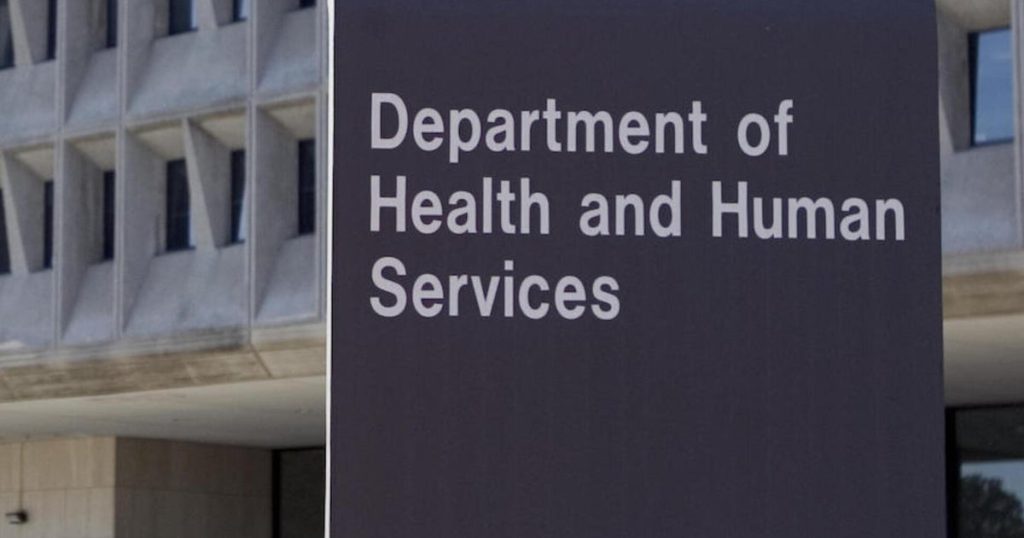The U.S. Department of Health and Human Services (HHS) has announced a significant reduction in federal COVID-19-related funding, cutting $11.4 billion meant to support state and local public health efforts. This funding, previously utilized for various pandemic responses, is being rescinded as officials declare the pandemic over. The decision has raised concerns among public health advocates regarding the implications of these sudden cuts on health services and disease monitoring, particularly in light of ongoing health challenges.
| Article Subheadings |
|---|
| 1) Funding Cuts and Their Scope |
| 2) Reactions from Public Health Officials |
| 3) Impacts on State Health Departments |
| 4) Broader Implications for Disease Monitoring |
| 5) The Ongoing Threat of COVID-19 |
Funding Cuts and Their Scope
The recent announcement from HHS to cut $11.4 billion in COVID-19-related funding has shocked many in the public health community. This decision comes as part of a broader strategy to reallocate resources as the Biden administration transitions to a post-pandemic approach. HHS officials stated in a release, “The COVID-19 pandemic is over, and HHS will no longer waste billions of taxpayer dollars responding to a non-existent pandemic that Americans moved on from years ago.” This marks a significant shift in the government’s stance on pandemic funding, which has been a source of financial support for various public health needs, including testing, vaccinations, and community health initiatives.
Reactions from Public Health Officials
The abrupt funding cuts have elicited strong reactions from health officials and organizations across the country. Notably, Dr. Céline Gounder, a contributor to CBS News and public health editor at KFF Health News, highlighted the potential repercussions of these cuts, stating, “This is just one in a series of many, many cuts we’re seeing across health agencies across the country.” Such reductions, she emphasized, could undermine not only COVID-19-related programs but also broader public health initiatives. The reliance of state and local health departments on federal funds, often constituting a significant portion of their budgets, underscores the critical nature of these resources.
Impacts on State Health Departments
Several states have begun to assess the direct implications of these funding cuts. Dr. Brooke Cunningham, Minnesota’s Commissioner of Health, expressed her concern regarding the sudden termination of approximately $226 million in grants related to COVID-19. This unexpected action, she stated, “impacts ongoing work and contracts,” thereby jeopardizing essential public health efforts. Other state officials echo these sentiments, emphasizing that the rescinded funding was meant to support not only pandemic preparedness but also other vital public health measures.
Broader Implications for Disease Monitoring
One critical area at risk due to these funding cuts is disease monitoring, particularly related to emerging threats like the recent measles outbreak in West Texas. Dr. Gounder pointed out that continued support for wastewater surveillance—a critical tool for tracking infectious diseases—may also be jeopardized. This technology serves as an early warning system that helps public health officials identify potential outbreaks and allocate vaccination efforts accordingly. The loss of such funding may leave states without the necessary tools to effectively address imminent public health crises.
The Ongoing Threat of COVID-19
Despite the declaration of the end of the pandemic, the reality is that COVID-19 continues to pose a threat to the public. Recent data from the CDC indicates that an average of 458 individuals per week are still succumbing to the virus. This statistic raises questions about the timing and rationale behind the decision to cut funding that, while aimed at reducing spending, may undercut ongoing preventive measures and support for vulnerable populations.
| No. | Key Points |
|---|---|
| 1 | HHS has cut $11.4 billion in COVID-19 funding for state and local health departments. |
| 2 | The announcement is part of a broader strategy as the federal government shifts focus post-pandemic. |
| 3 | Public health officials warn of significant repercussions, including impacts on disease monitoring initiatives. |
| 4 | State health departments are reeling from funding losses, jeopardizing ongoing public health contracts. |
| 5 | COVID-19 remains a public health threat, with continued fatalities being reported weekly. |
Summary
The decision to withdraw $11.4 billion in funding from COVID-19 related initiatives has raised alarms across the public health sector. As officials assert that the pandemic is over, the consequences of this funding withdrawal may adversely impact ongoing public health measures, particularly in areas related to disease surveillance and monitoring. Health officials and departments must navigate these sudden changes carefully, balancing the need for adequate funding with the persistent threat that COVID-19 and other diseases pose to communities nationwide.
Frequently Asked Questions
Question: What is the significance of the $11.4 billion funding cut?
The $11.4 billion funding cut from HHS is significant as it directly impacts the ability of state and local health departments to respond to current and future public health needs, including COVID-19 initiatives and disease monitoring.
Question: Why did HHS declare the pandemic over?
HHS has declared the pandemic over as part of a broader strategy to reallocate resources and reduce government spending associated with COVID-19, asserting that Americans have largely moved on from the crisis.
Question: What might be the implications of cutting funding for public health initiatives?
Cutting funding for public health initiatives may lead to vulnerabilities in disease monitoring, an increase in potential outbreaks, and limited resources for local health programs dedicated to community wellness and safety.


